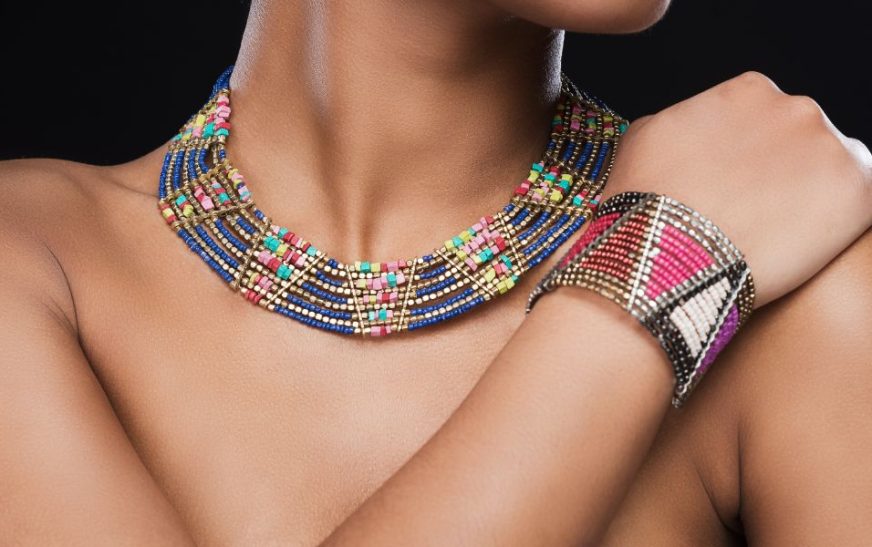In the ever-evolving world of fashion, jewelry has always held a special place. For centuries, it has been a symbol of status, beauty, and craftsmanship. However, with advancements in technology, the realm of jewelry design has experienced a revolution. This blog delves into how technology is redefining luxury accessories, highlighting innovative tools and techniques that have paved the way for a new era in the world of jewelry.
The Artistry of Jewelry Design
Before we dive into the technological innovations, let’s take a moment to appreciate the artistry of jewelry design. The process of creating exquisite pieces of jewelry requires intricate craftsmanship and a deep understanding of materials. Jewelry designers have always combined aesthetics with practicality, turning precious metals and gemstones into wearable works of art.
CAD (Computer-Aided Design) in Jewelry
CAD: A Game Changer in Design
Computer-Aided Design, commonly known as CAD, has transformed the way jewelry is designed. Designers now utilize specialized software to create intricate designs with precision and accuracy. CAD allows for the creation of 3D models, enabling designers to visualize the final piece before it’s physically crafted. This not only enhances efficiency but also reduces material wastage.
3D Printing: Shaping the Future
3D Printing: A Revolution in Manufacturing
One of the most groundbreaking innovations is 3D printing. This technology has disrupted traditional jewelry manufacturing. Using 3D printers, jewelry pieces can be created layer by layer, allowing for the production of complex, detailed designs that were once unimaginable. It also enables customization, as clients can personalize their jewelry.
Augmented Reality (AR) Jewelry Try-On
AR Jewelry Try-On: Bringing the Showroom to You
In the past, buying jewelry was often a tactile experience – you had to try it on to see how it looked. With the advent of AR technology, customers can virtually try on jewelry from the comfort of their homes. AR apps and platforms provide a lifelike preview of how a piece will appear when worn, enhancing the online shopping experience.
Blockchain in Jewelry Authentication
Blockchain: Ensuring Authenticity
Blockchain technology has found its way into the jewelry industry to combat issues related to counterfeit products. By creating a digital ledger of a jewelry piece’s history, blockchain ensures its authenticity and provenance. This gives consumers peace of mind when investing in high-value jewelry.
IoT (Internet of Things) Jewelry
IoT Jewelry: A Fusion of Fashion and Technology
IoT has made its mark in jewelry through smart accessories. These pieces are embedded with sensors and connectivity features. They can track health metrics, serve as security devices, and even act as communication tools. IoT jewelry is not just an accessory but a functional, tech-savvy companion.
Sustainable Jewelry Production
Sustainability: The Future of Luxury
The jewelry industry is also embracing sustainability. Technologies like recycled materials and ethical sourcing have become pivotal in designing and manufacturing. Consumers today seek eco-friendly options, making sustainability a cornerstone of the luxury jewelry market.
AI-Driven Design Assistance
AI: Your Jewelry Design Assistant
Artificial Intelligence plays a role in jewelry design by offering design suggestions based on customer preferences and trends. AI algorithms analyze vast data sets to provide insights, making it easier for designers to create pieces that resonate with their audience.
Laser Technology for Precision
Laser Technology: A Precision Game-Changer
The use of lasers in jewelry design and manufacturing has become indispensable. They enable precise engraving, cutting, and welding, contributing to the fine detailing that defines luxurious jewelry.
Virtual Jewelry Shopping Experiences
Virtual Shopping: A New Frontier
Virtual reality (VR) and augmented reality (AR) are being used to create immersive online jewelry shopping experiences. Customers can explore a virtual showroom, examine pieces in detail, and make informed choices.
Digital Jewelry Marketing and E-commerce
Digital Marketing: Reaching a Wider Audience
The digital age has given rise to a new era in jewelry marketing. Social media, influencer partnerships, and e-commerce platforms have made it easier for designers and brands to reach a global audience, regardless of their physical location.
Final Words
As technology continues to shape the jewelry industry, the line between art and innovation blurs. The fusion of traditional craftsmanship with cutting-edge technology has given rise to an exciting era of jewelry design. Embracing sustainability, personalization, and authenticity, luxury accessories have evolved to meet the demands of the modern consumer.
Now, let’s explore some commonly asked questions about the innovations in jewelry design.
Commonly Asked Questions
Q1: How has 3D printing impacted the jewelry industry?
3D printing has revolutionized jewelry manufacturing by enabling the creation of intricate, customized designs with unprecedented precision and reducing production time and material wastage.
Q2: Can I trust blockchain for verifying the authenticity of jewelry?
Blockchain is a reliable technology for authenticating jewelry. It creates an immutable record of a piece’s history, ensuring its provenance and preventing counterfeiting.
Q3: What are the benefits of using AR for jewelry try-ons?
AR technology allows customers to virtually try on jewelry, providing a lifelike preview of how a piece will look when worn, enhancing the online shopping experience.
Q4: How does AI assist in jewelry design?
AI offers design suggestions based on customer preferences and trends, making it easier for designers to create pieces that resonate with their audience.
Q5: How is sustainability becoming important in the jewelry industry?
Sustainability is crucial in the jewelry industry, with an emphasis on ethical sourcing and the use of recycled materials, aligning with the eco-friendly preferences of consumers.

























